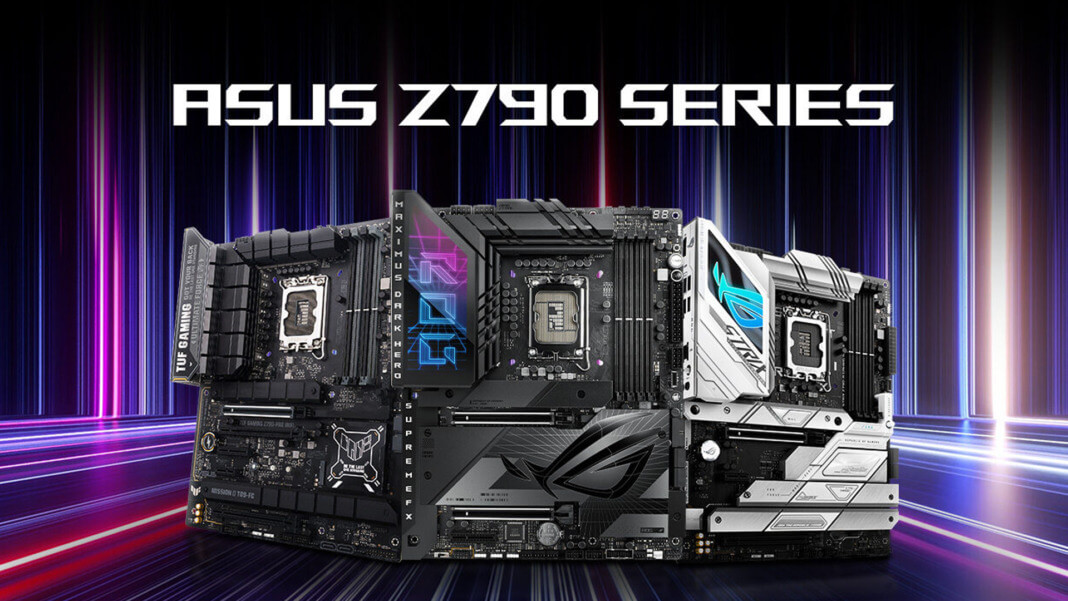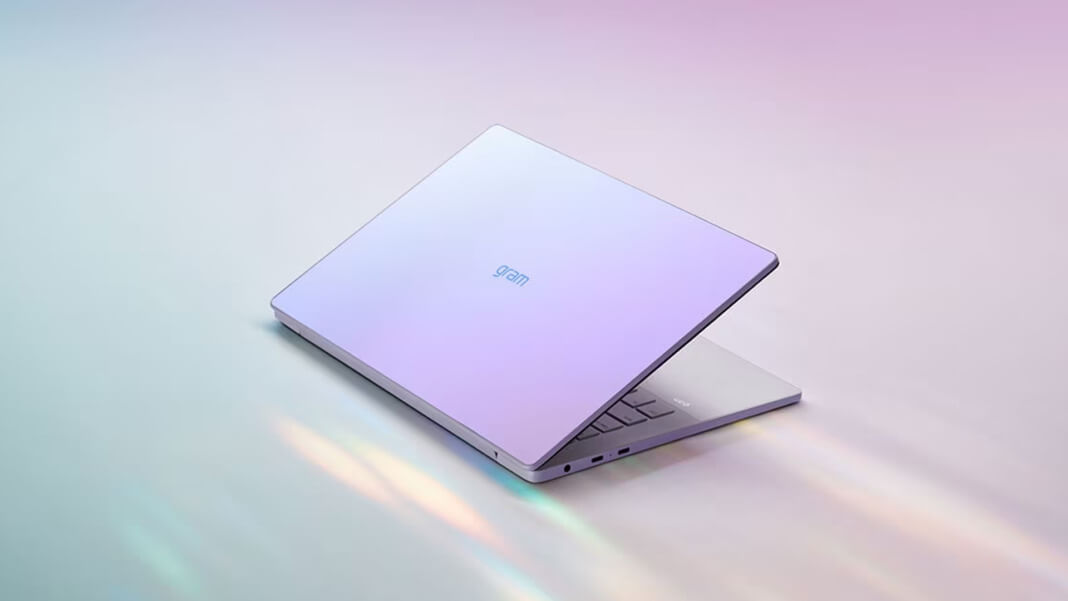ASUS today announced three new Intel Z790 motherboards at Gamescom 2023: the ROG Maximus Z790 Dark Hero, ROG Strix Z790-A Gaming WiFi II and TUF Gaming Z790-Pro WiFi, all of which support 12th Gen, 13th Gen, and Next-Gen Intel Core processors. Each motherboard includes PCIe 5.0, DDR5 memory support, enhanced connectivity, performance tuning capabilities, efficient cooling solutions, DIY-friendly features and a host of other features.
Intel LGA 1700 CPU socket rides again
Intel 12th and 13th generation Core processors both slot into the LGA 1700 socket, so users have been able to build their own way with either Z690 or Z790 motherboards while taking their pick from a wide selection of CPUs. But LGA 1700’s time isn’t over. This socket will also be compatible with Intel Next-Gen CPUs.
This means that users will have plentiful options as they plan a new build or an upgrade. They can upgrade their motherboard to take advantage of the high-performance networking, abundant connectivity, and optimized power solutions of the latest ASUS Z790 motherboards. Or they can stick with their battle-tested Z690 or Z790 motherboard while they upgrade to an Intel Next-Gen CPU. They only need to make sure to update their older motherboard’s BIOS for full compatibility with upcoming Intel CPUs.
Next-level bandwidth with WiFi 7
Early in 2023, we announced our very first WiFi 7 routers. Ultrafast WiFi 7 (802.11be) shatters all boundaries to give users exceptional networking speeds for gaming, entertainment and more. Users asked for more speed, and WiFi 7 delivers. While WiFi 6 focused on congestion-busting tech designed for crowded networks, WiFi 7 kicks into high gear with new features that deliver faster wireless speeds than ever, all while retaining or refining the advantages of WiFi 6 and WiFi 6E.
WiFi 7 uses many technologies to achieve these higher speeds. It starts with ultrawide 320 MHz channels that allow WiFi 7 routers to deliver higher performance and larger capacity. 4096 Quadrature Amplitude Modulation (QAM) allows for greater amounts of data to be more densely embedded in each signal. Additionally, multi-link operation (MLO) allows devices to simultaneously transmit and/or receive across different bands and channels, with separation of data and control planes. The parallel links enable faster speeds by aggregating bandwidth, with more reliable WiFi connections on multiple concurrently used bands.
WiFi 7 also makes more efficient use of the available spectrum. With Multi-RU and Puncturing, WiFi 7 devices will be able to take full advantage of the remaining part of the channels that are not being used or interrupted. This way, the WiFi bandwidth can be used efficiently to make data transmission quicker and more reliable.
To take full advantage of the latest wireless standard, users will need both a WiFi 7 router and a WiFi 7 device. The latest ROG Maximus and ROG Strix Z790 motherboards will be among the very first ASUS products equipped with WiFi 7. Look to the ROG Maximus Z790 Dark Hero for the very best wireless networking experience. Offering link speeds up to 5.8 Gbps, this motherboard is perfect for users with a multigigabit internet connection or for those who want a high-speed wireless connection to a network-attached storage (NAS) unit.
To help users get the most out of their WiFi 7 connection, ASUS is introducing the WiFi Q-Antenna. It features an all-new design including both circuit optimizations to the PCB and enhanced inner pin connectors, greatly improving signal throughput for the 5 GHz and 6 GHz bands. Its easy one-step design means that users don’t have to do anything more than plug it in to have a great experience. Since it is a directional antenna, we give users convenient tools in the Armoury Crate app to improve signal quality and range by adjusting its position. Direction Finder detects signal strength and identifies the ideal positioning for this antenna in just a few steps, while Fast Check gives users a quick way to check signal strength and ensure that they are getting the best connection.
More fast storage at the user’s beck and call
In the months following the release of the first ASUS Z790 motherboards, the first PCIe 5.0 M.2 SSDs hit the market. Offering unprecedented peak transfer speeds, these drives are perfect for enthusiasts who need high-speed access to large files and datasets — not to mention any user who craves the absolute fastest boot and application load times.
To make it even easier for users to take advantage of these cutting-edge drives, ASUS is offering onboard PCIe 5.0 M.2 slots on more Z790 boards than ever before. The ROG Maximus Z790 Dark Hero awaits for users in need of one of these high-performance M.2 slots.
For users building a PC in 2023, the number of available M.2 slots is often just as important as the available bandwidth from each slot. They might need many M.2 slots to conveniently build out a large storage library, or perhaps they have a collection of M.2 drives from previous builds that they would prefer to get more mileage out of. Either way, ASUS is bolstering its Z790 lineup with even more options, such as the ROG Strix Z790-A Gaming WiFi II that features five M.2 slots with premium heatsinks and matching aesthetics.
Convenient front-panel device charging
Most people need all the convenient charging locations that they can get. With all the devices inside of today’s connected homes, users almost certainly have a smartphone, tablet or handheld that could use a battery top-off whenever they sit down at their computer. The latest Z790 motherboards make it easy by including a connector that allows users to set up a fully loaded front-panel USB Type-C port in a compatible case. With USB 3.2 Gen 2×2 speeds, it will transfer data at up to 20 Gbps. With Quick Charge 4+ or USB Power Delivery 3.0 tech, depending on the motherboard a user picks, they can rapidly recharge their connected device.
But that’s not all. We also provide a built-in feature called USB Wattage Watcher. USB Wattage Watcher allows users to monitor the current wattage delivered to a device connected to the USB 20 Gbps Type-C front-panel connector. With USB Wattage Watcher, users can glance at their device’s charging wattage in real-time and check on their device’s Fast-Charging status.
Easy memory optimization with AEMP II
For a time, PC builders debated whether they’d prefer affordable DDR4 or high-performance DDR5 RAM for their systems. Now that the DDR5 market has matured, and a wide range of memory kits are available at increasingly enticing prices, it’s getting harder to ignore the performance potential of next-gen memory. Content creators, gamers, engineers who work with large datasets, and heavy multitaskers all benefit from a high-core-count CPU with exceptional multi-threaded performance — and DDR5 is a better match for Intel Next-Gen Core CPUs than DDR4.
To give users a hassle-free way to get their memory kit up to speed, all ASUS Z790 motherboards that support DDR5 give users access to AEMP II profiles. Built through a flexible training method, these profiles make it easy for them to tune their memory above baseline settings while maintaining stable system operation. With AEMP II, optimized memory settings are just a click away, whether users are getting the most out of an entry-level module or priming a high-speed kit for ultimate performance. The high-end ROG Maximus Z790 Dark Hero and the ROG Strix Z790-A Gaming WiFi II go a step further with DIMM Flex, a BIOS feature that monitors DRAM temperatures and dynamically adjusts performance as thermal headroom permits.
Intelligent controls get it done
Intelligent motherboard control starts with AI Overclocking. Powered by exhaustive research and characterization of the performance potential of thousands of actual CPUs in our testing labs, this tool leads the industry for overclocking performance and ease of use. It boosts CPU clocks with just one click. AI Overclocking’s sophisticated intelligence also monitors CPU cooler efficiency and changes in the operating environment to tune its parameters over time for the best performance with a system’s unique set of components. Users will have access to AI Overclocking on all ROG Maximus and ROG Strix Z790 motherboards. For the first time, they can also use AI Overclocking on a TUF Gaming motherboard with an Intel chipset.
This intelligent tech stands ready to optimize cooling, as well. AI Cooling II is the perfect solution for builders who opt for higher-RPM case fans capable of moving large volumes of air. These fans keep high-performance components cool under load, but they can produce excessive noise when users are performing light tasks like reading articles, streaming media or writing an email. AI Cooling II gives users an easy tool for getting effective airflow under load and quiet operation during light tasks.
When users first enable this tool though FanXpert in the Armoury Crate app, it uses a machine learning algorithm to gather system data during a brief stress test. From then on, AI Cooling II monitors the CPU and uses the data from its stress test to calculate the lowest fan speed required to effectively cool a system — while minimizing noise levels. This fan control system can reduce system fan noise by up to 5.7 dB under sustained loads. Through this self-adaptive system, users will always have cooling power when they need it and quiet operation when they want it. ASUS has also taken this opportunity to update FanXpert with a full set of fan calibration and control options. Users will get temperature input mapping and fan response mapping, all inside Windows through the convenient Armoury Crate app.
Whether users are coordinating with their squadmates in an online game or video conferencing with coworkers and potential clients, clear communication is essential. Two-Way AI Noise Cancelation makes it happen. It leverages a massive deep-learning database to filter background noise from a microphone and incoming audio. Distracting keyboard clatter, mouse clicks and other ambient noises are smartly pared back so users can hear and be heard with crystal clarity while gaming or in calls.
DIY-friendly features make PC building easier than ever
With every generation of PC components, we work to make the process of building a PC easier. The exclusive ASUS Q-Design innovations across the ASUS Z790 lineup simplify and streamline the process of building and upgrading a PC.
Today’s cutting-edge graphics cards often have beefy cooling solutions and sturdy backplates. That is great for performance—but they can get in the way of popping the PCIe release latch free. The ASUS PCIe Slot Q-Release button lets users release a graphics card from the slot with one press. ASUS first debuted this convenient feature on its highest-end Z690 motherboards, and it is proud to also offer it on mainstream TUF Gaming models.
Similarly, traditional DIMM slot designs require users to lock in both sides of the memory stick, and it was not always easy for those with larger fingers to unlock the latch closest to the graphics card. That is why ASUS has also implemented its single-sided Q-DIMM latching design on many of its Z790 motherboards. With this arrangement, users do not have to worry about a latch that may be too close to their graphics card. A single latch on the easier-to-access side of the DIMM slot is all it takes to hold memory modules firmly in place. Installing RAM — and upgrading it down the road — is that much easier.
The latest Z790 motherboards even help in the event that users don’t install a stick of RAM correctly. The Q-LED indicator will light up — even before booting — to let users know that a memory stick isn’t seated properly.
ASUS has also simplified the process of installing an M.2 drive. Our M.2 Q-Latch gives users the peace of mind that they will never have to handle another tiny, easily lost M.2 screw ever again. Now, they can secure or loosen an M.2 drive with just their fingertips. They will find the M.2 Q-Latch on every ROG Maximus, ROG Strix, and TUF Gaming Z790 motherboard.
Stealthy looks and stellar performance: The ROG Maximus Z790 Dark Hero
Other colors wax and wane in popularity, but black has a timeless quality that never goes out of style. The ROG Maximus Z790 Dark Hero doubles down on shadowy tones to create a show-stopping aesthetic. Polymo lighting on the I/O shroud sets it all off with the perfect accent. This microstructural array of light and color features two separate layers of RGB lighting, empowering builders to show off a luminous RGB style that they will not see anywhere else.
ASUS backs the stealthy good looks of the ROG Maximus Z790 Dark Hero with a cutting-edge feature set. Dual Thunderbolt 4 connectors at the rear panel stand ready to support next-generation peripherals at full speed, and next-gen ROG SupremeFX audio paired with an ESS ES9218 Quad-DAC for front-panel connections provides crisp, clear gaming audio no matter what headset or speakers users plug into a PC. A USB 20 Gbps connector gives users a high-bandwidth USB Type-C port for their front panel — and Quick Charge 4+ support means that this port can rapidly recharge a connected device like a smartphone, too. Three Gen 2 addressable RGB LED headers and one traditional four-pin lighting header coordinate the illumination of a build perfectly with Aura Sync.
For those who plan to overclock a top-shelf Intel processor, the ROG Maximus Z790 Dark Hero offers a 20+1 teamed power stage topology to power the CPU Vcore and onboard graphics processor. Each power stage is rated for up to 90 A of output, and they provide the cleanest possible power delivery to the processor, even under the highest loads.
The ROG Maximus Z790 Dark Hero’s ample M.2 support gives users high-end options for building out a speedy and spacious storage system. The onboard PCIe 5.0 M.2 slot lets them install one of the fastest drives on the market, and four additional PCIe 4.0 M.2 slots let them supplement their storage even further with additional drives.
The ROG Maximus Z790 Dark Hero gives users high-end networking options. WiFi 7 support will let them access the latest generation of wireless networking when they pair this motherboard with a WiFi 7 router. For those who prefer wired connections, a high-bandwidth 2.5 Gb Ethernet port awaits.
Finally, this motherboard simplifies the build process and provides helpful diagnostics tools. The pre-mounted I/O shield eases an important installation step, and the PCIe Slot Q-Release button and M.2 Q-Latch system streamline the process of installing and upgrading graphics cards and storage drives.
White surfaces and abundant gaming power: The ROG Strix Z790-A Gaming WiFi II
ROG Strix motherboards take the basic DNA of the ROG Maximus series and distill it into more attainable designs that provide exceptional gaming performance and outspoken style. The ROG Strix Z790-A Gaming WiFi II moves the series forward with more connectivity, refined VRM cooling and more storage options.
The ROG Strix Z790-A Gaming WiFi II stands ready to serve as the foundation for a white-themed build with its striking white and silver I/O shroud and heatsinks, each an eye-catching contrast to the black PCB. Even the ASUS WiFi Q-Antenna is draped in luxurious white so that a build has a cohesive aesthetic.
WiFi 7 support headlines this motherboard’s spec sheet, but it is far from the only upgrade offered by the ROG Strix Z790-A Gaming WiFi II. ASUS has boosted its M.2 slot count up to five, and each of those slots has robust cooling with a built-in heatsink. The rear I/O selection now includes a total of twelve USB ports to ensure that users have the connectivity that they need. And ASUS has bolstered the VRM cooling solution with massive heatsinks and high-conductivity thermal pads.
New smarts, same heart: The TUF Gaming Z790-Pro WiFi
PC builders everywhere trust TUF Gaming to deliver essential gaming features, a no-frills aesthetic, and reliable performance. The TUF Gaming Z790-Pro WiFi carves new territory for the family with features that used to be the sole domain of the most cutting-edge ASUS motherboards.
The TUF Gaming Z790-Pro WiFi offers access to AI Overclocking, a first for the TUF Gaming family of ASUS Intel motherboards. Novice builders will appreciate how it allows them to easily elevate the performance of their build. Advanced PC enthusiasts can take advantage of AI Overclocking to establish a baseline for their tweaking efforts. And everyone can enjoy the way that this feature can act as a failsafe, scaling back performance as necessary if something unexpected happens, like a fan failure.
Many PC users love to use a front panel port to recharge their smartphone while they use their PC. The TUF Gaming Z790-Pro WiFi lets users hook up a high-speed port on a case’s front panel with its USB 20 Gbps Type-C connector equipped with USB Power Delivery 3.0.
Finally, ASUS is also offering its all-new ASUS WiFi Q-Antenna with the TUF Gaming Z790-Pro WiFi. Paired with a WiFi 6E router, this motherboard’s WiFi 6E connectivity lets users take advantage of the newly opened 6 GHz band to rise above the interference that might be slowing down their wireless home network. The ASUS WiFi Q-Antenna will give them the tools they need to get the best possible signal.





